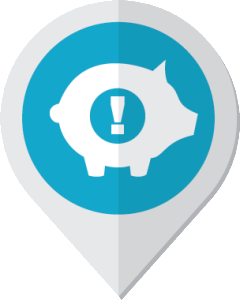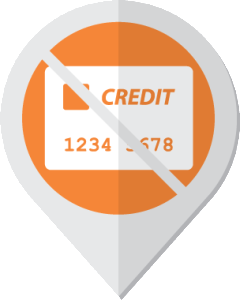 So you’ve decided you want to begin investing. Outstanding. Way to go!
So you’ve decided you want to begin investing. Outstanding. Way to go!
This will be the first in a series of five articles to help you get started.
But, before you invest anything at all, there are two pre-investing steps I strongly encourage you to take. Unless you do these things, it will be hard to stay on the investment path.
 Emergency Fund
Emergency Fund
First, you need to establish an emergency fund. This is money you set aside for small emergencies. The tires on the car must be replaced. The washing machine stops working. The springs start poking out of your mattress. The hard drive on your computer crashes.
Investing is a long term process of putting money away for a future goal. But before you can truly commit yourself toward a process of diligent monthly investment, you need a way to cover those emergency needs that will come up. If you don’t take this step, you’ll find yourself postponing your monthly investments because of the small emergency expenses that (always) seem to crop up.
How much should you set aside? $1,000 is a good amount. It will cover most small emergency needs. But you must quickly replenish the fund anytime you dip into it.
How do you accumulate this $1,000? Have a garage sale. Stop eating at restaurants; instead, take lunches to work. Find a part-time, second job. Forego the Starbucks frappuccinos for a while. Give up cable TV; watch shows on your computer. Sell the spare Xbox console you don’t use. Adjust the thermostat to save energy. Basically, do whatever you can to quickly establish your emergency fund.
 Credit Cards
Credit Cards
Second, understand that the best “investment” you can make is to eliminate credit card debt. Let’s say you owe $1,000 to the credit card company, and are paying them 20% interest. Over the course of a year you would pay $200 in interest on that debt.
If you were given $1,000, and used the gift to pay off the credit card debt, then you save $200 over the next 12 months by not having to pay interest. If, instead, you invested in stocks and earned a 10% return (which is the average for stocks), you would make a $100 return over the next 12 months. Hopefully you see that avoiding $200 in interest payments is a better use of your $1,000 than achieving a $100 return on your investments. Avoiding a $200 expense is better than generating $100 of investment income.
So, paying off credit cards offers a higher return. Also, paying off credit cards offers you a certain return. Investments have risk; you might earn 10% on your stocks, but you might instead lose money.
Before you begin investing, pay off your credit card debt. Once you’ve done that, only use credit cards if you’ll pay off the full balance every month. Otherwise you’re back to borrowing money at very high interest rates.
The same applies to any high-interest debt that you have – college loans, vacation loans, etc. You are better off to pay off any debt with an interest rate > 10% before you begin investing.
Next week’s topic: The 3 questions you need to answer about yourself before investing.
About the Author
 With a BS degree in geophysics, I took a job exploring for oil for a major energy company. I was able to save money, but knew absolutely NOTHING about how to invest it. Didn’t know what a stock was, how the price was set, how to buy a share, etc. So… I headed back to school part time—primarily to learn about stocks and bonds—and eventually earned an MBA in finance (which the oil company put to great use).
With a BS degree in geophysics, I took a job exploring for oil for a major energy company. I was able to save money, but knew absolutely NOTHING about how to invest it. Didn’t know what a stock was, how the price was set, how to buy a share, etc. So… I headed back to school part time—primarily to learn about stocks and bonds—and eventually earned an MBA in finance (which the oil company put to great use).
I’ve maintained a continued personal interest in investing, and read some outstanding books that have helped refine my investing strategy and goals over the last three decades. I’ve been with Leggett & Platt since 2000, where my professional responsibilities now include strategy, investor relations, financial communications, and analysis. But for 13 years I’ve also served as Chair of the Investment Committee that oversees our pension and 401k investments. Given that latter job role, employees sometimes ask me how they might start investing. These brief articles explain one approach that novice investors might take.
